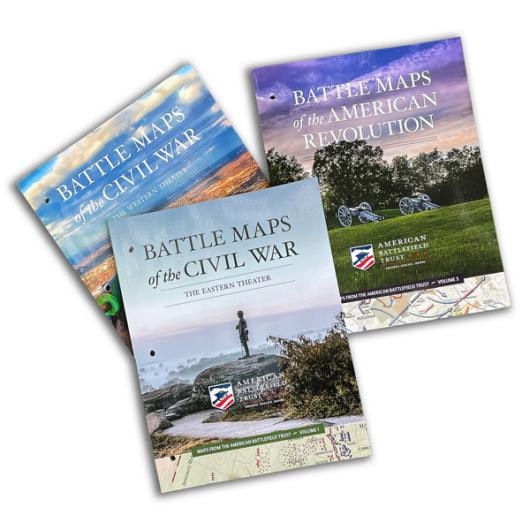Field Trip Planner
Your step-by-step guide to planning the perfect field trip!
Many historic sites provide field trip tips, FAQs, guidelines, and procedures to help you during the field trip planning process. The following general guidelines will also help you plan a memorable learning experience for your students.
Step #1: Select a historic site to visit.
Historic sites range from plantation homes to cemeteries, from stops on the Underground Railroad to battlefield parks. The American Battlefield Trust History Field Trip Grant Program supports field trips to sites associated with the Revolutionary War, the War of 1812, and the Civil War. The American Battlefield Trust has a list of more than 700 heritage and battlefield sites across the nation. View our map of battlefields and historic sites across the nation.
Here are some of the American Battlefield Trust's Top Ten Battlefields and Historic Sites for field trip destinations:
- Gettysburg
- Antietam
- Washington DC
- Yorktown
- Lexington and Concord
- Fort McHenry
- Harper's Ferry
- Shiloh
- Independence Hall
- Chickamauga
Step #2: Scout the site.
Take a trip to the site on your own to make certain that it is appropriate for your students and your curriculum. Many sites will waive entrance fees if you let them know that you are a teacher scouting for a field trip.
Don't forget to check out the locations website, YouTube page, and other online resources for pre-trip ideas.
Step #3: Contact the site to make arrangements for your group.
Some sites offer their own programs for school groups or will tailor their programs based on your curriculum. Have all the details of your trip on hand, such as the number of students, your length of stay, tentative dates, etc. Discuss any special needs you and your students might have.
Don't forget to ask if the site has restrooms and lunch facilities.
Ask the site if it has any special rules of its own concerning fees, number of chaperones, etc.
Step #4: Make arrangements with your school administration.
Follow your school district's procedures concerning the following:
- Health and safety;
- Permission slips;
- Transportation arrangements;
- Hiring substitutes;
- Finding chaperones (education students from a local college may be available to assist);
- Any special policies and procedures outlined by your school district.
Step #5: Work out the cost of the trip.
Budgeting is a key factor in planning any field trip. Educators should take into account the following items when estimating the cost of the trip.
- Bus transportation;
- Parking fees;
- Meals;
- Admission fees;
- Guide fees;
- Special program fees.
Step #6: Apply to the History Field Trip Grant Program.
The American Battlefield Trust supports field trips to destinations associated with the Revolutionary War, the War of 1812, and the Civil War. The History Field Trip Grant Program offers up to $3,000.00 in field trip support and helps to cover transportation, guide, and admission fees. Learn more here and apply to the History Field Trip Grant Program today!
Step #7: Include pre-trip materials into your lesson plans.
Take the time to integrate site-specific details into your lesson plans. From the dates and location of historical events to the personalities of historical figures who played a role at the site(s) that you are visiting will help to reinforce the learning experience.
The American Battlefield Trust offers dozens of virtual 360 experiences, hundreds of videos, and thousands of web pages that support placed based education.
Step #8: Take the field trip and have fun!
Field trips and engaging with our collective past should be a memorable experience. Some of the fondest memories that kids have from their school days relate to field trip days. Never underestimate the power of place!









